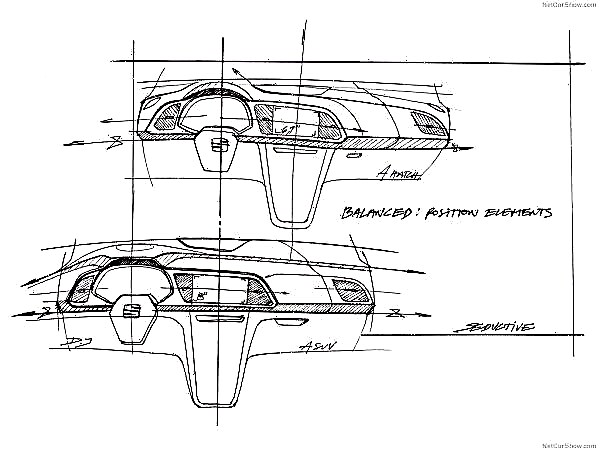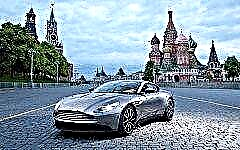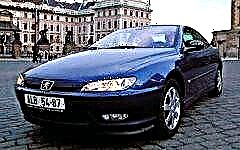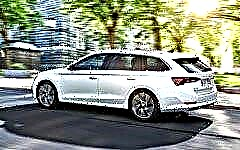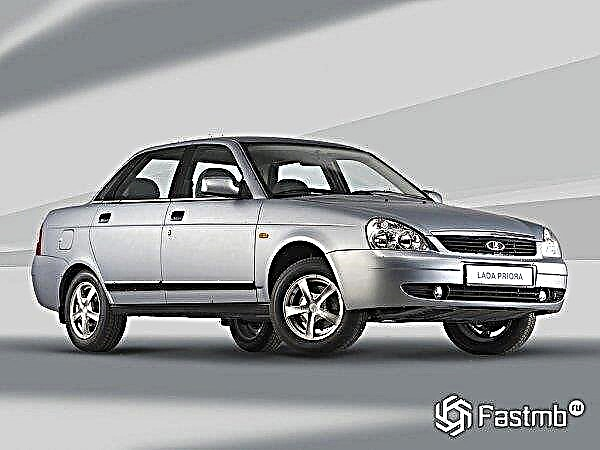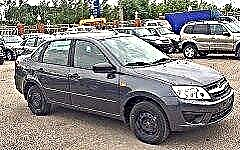
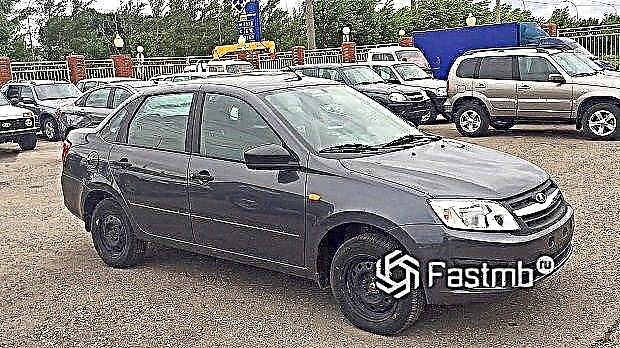
The content of the article:
- The most reliable Russian cars in Kazakhstan
The Russian auto industry cannot offer a wide variety of models, but no matter how many there are, they are all presented in the Kazakhstan market. "Zhiguli" and "Volga" continue to be in great demand - the cars are unpretentious in terms of fuel quality, reliable, they can be repaired in almost any auto repair shop.
What models for 2020 are recognized by Kazakh drivers as the most reliable?
The most reliable Russian cars in Kazakhstan
- VAZ 2190 (Lada Granta Sedan) - 3,100,000 T (tenge, 1 tenge - approximately 0.2 rubles);
- Niva 2121 - 4,400,000 T;
- UAZ Patriot - 9,450,000 T with manual gearbox;
- Lada Vesta - 4,500,000 T;
- Lada Vesta Cross - 6,000,000 T;
- GAZ GAZelle Business - 8,700,000 tons;
- Lada Largus Cross - 5,700,000 T;
Lada granta sedan
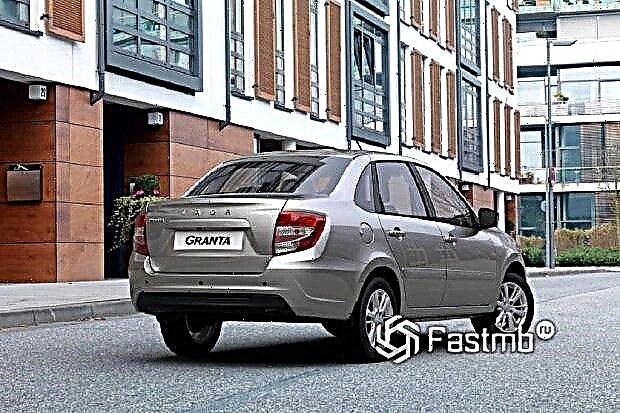
The presentation of the restyled version of the Lada Grant sedan took place in 2018 at the Moscow Motor Show. For almost two years the car has been ranked first in popularity in its segment. After the update, the Grant received minor body updates, and now visually the sedan resembles the flagship of the AvtoVAZ Vesta line.
The radiator grille has been redrawn, plastic covers form an "X-face", chrome inserts complement the overall stylish look. The front fenders and hood have remained virtually unchanged, with the biggest changes in the rear of the car. After restyling, the body lost its massiveness and began to look more elegant and stylish.
If you are not a fan of the VAZ brand, then the innovations in the cabin may seem significant - this is a redesigned dashboard, a new arrangement of buttons and sensors, assistance and comfort systems.
But experts saw in the updates of Grants the interior of the Lada Kalina, a thing of the past. Among the innovations, we can note the new material for the lining of the pillars and the upholstery of the seats - the chairs received comfortable lateral support and improved headrests and armrests.
The power unit of the B-class front-wheel drive sedan is represented by two gasoline atmospheric units. The 1.6-liter eight-valve engine is considered more reliable, although not as powerful. Engine productivity - 86 hp from. with a torque of 140 Nm.
The second unit is for 16 valves with a capacity of 98 or 106 liters. sec., gives out not much more torque - 145 Nm. But in the top-end configuration, the aspirated can be taken from the robotic AMT, and this is a sports acceleration system and increased noise isolation. The sedan accelerates from 0 to 100 km / h in 10.5 seconds, the maximum speed is 200 km / h.
Lada 4 × 4 three-door

Despite the fact that there are all modifications of Russian SUVs on the Kazakhstan market, the classic Niva VAZ 2121 or Lada 4 × 4 remains the most popular.
For many decades of production, the all-wheel drive off-road vehicle of the K1 class has been able to fully justify the title of the best Soviet, and then Russian, car for any road.
Since 2006, after a large-scale update of the base and platform, Niva has received the trade name Lada 4 × 4. As before, the car is produced in three- and five-door versions. And if the five-door Niva is more popular in the Ukrainian market, then in Kazakhstan the unconditional leadership belongs to the three-door body.
The power unit is represented by a single gasoline unit with a volume of 1.7 liters and a capacity of 83 liters. The pair is familiar to many drivers, a manual 5-speed gearbox. Average fuel consumption is 9.7 liters of gasoline.
UAZ Patriot

The most expensive and no less reliable Russian car in Kazakhstan is the 2020 UAZ Patriot with an automatic transmission.
The model entered the market in 2020 and immediately attracted attention with its new powertrain. The Patriot is equipped with a classic 6-speed automatic transmission, the transmission is considered one of the most reliable in the class, the system was developed jointly by General Motors and Punch Powertrain engineers. The declared resource is 200,000 km.
To "match" the new transmission, the familiar gasoline engine of the ZMZ-409051 class was modernized on the Patriot. The tandem allows the SUV to confidently maneuver in city traffic jams and overcome almost any off-road.
The Patriot has several modes of operation. By default, this is rear-wheel drive, the front axle is connected automatically, there is an option to lock the rear-wheel drive through the Eaton electronic system. In the 2020 model, the suspension architecture is improved, there is a steering damper.
Safety systems: ABS (anti-lock), ESP (stability control), EBD (brake force distributor), TCS (traction control), CBC (cornering braking control), HBA (brake hydraulics) allow you to easily move on any track.
The power unit is represented by a single 150 hp gasoline engine. and a volume of 2.7 liters. The unit has long established itself as one of the most productive and reliable in the UAZ line, with an average service life of 300,000 km.
If we compare the new generation of the Patriot with its "mechanical" brother, then you can see minor changes in the external design. This is a black gloss of a radiator grille, a new nameplate and alloy wheels of the "Tanama" design, which can be installed on all Patriot configurations, regardless of the model year.
Lada Vesta

The most economical sedan in the VAZ lineup is Vesta, the fuel consumption in the city of a car rarely exceeds 7 liters of gasoline. For Kazakhstan, the fuel indicators of a car are not significant - much more attention is paid to the spacious interior and reliability of the chassis. And the car of the Izhevsk plant has enough of this.
A few months after the full-scale launch of production, critics and skeptics were forced to admit that the Lada Vesta concept is a breakthrough for VAZ engineers, the Lada flagship is the second best car for the whole period of Zhiguli production. The championship remains with the VAZ 2106, which was the leader of its time.
The release of the sedan would have been impossible without the active assistance of Renault-Nissan engineers, the main role in the creation of the model belongs to S. Mattin, the lead designer of the project, and the mechanics of AvtoVAZ, who manually assembled the prototype.
Lada Vesta is built on the Lada B / C platform - it has a wheelbase of 2635 mm, the front struts are a classic MacPherson strut, and a torsion beam is installed on the rear axle. The front wheels are equipped with disc brakes, the rear wheels are equipped with drum brakes.
Vesta has not only an original body and stylish appearance, but also a whole range of options that are equipped with European sedans in this segment. These are the ABC system, stabilizers, electric power steering, traction control systems, modern navigation, diode DRLs, immobilizer, central locking and much more. All this, together with high-quality cladding and expensive cladding material, is already available as standard.
The engine range is represented by a single 1.6-liter engine with a capacity of 106 hp. Depending on the type of box, the car shows different dynamic acceleration. With a manual 5-speed transmission, Vesta's acceleration from 0 to 100 km / h takes 11 seconds, a robotic 5-speed AK will accelerate the sedan one second slower.
Lada Vesta Cross

The updated Vesta model with the Cross prefix is not inferior in reliability and popularity. In its "crossover" version, the sedan has an increased ground clearance of 29 mm compared to the classic Vesta, and can be equipped with a more powerful engine.
Sales of the crossover version began in 2018 after the premiere at the Moscow Motor Show. In addition to the raised body and the new engine, the sedan is no different from its counterpart - the model has the same plastic body kit and similar wheel arches.
The interior of the cabin duplicates its predecessor - in the center of the dashboard there is a touchscreen display of the multimedia complex, a climate control unit with two "twists", two niches for small things.
The familiar 1.6-liter gasoline unit is left in the West Cross database. But the top-end version offers an already upgraded 1.8-liter aspirated engine with a return of 122 liters. from.
The low-power unit is equipped with only a five-speed "mechanics"; for the second motor, both a familiar manual transmission and a "robot" for 5 speeds are offered.
In addition to standard equipment, Lada Vesta Cross can offer heating of all seats, illumination of passengers' feet, additional sockets and USB-charging, rear-view cameras, a modern navigation system.
GAZ GAZelle Business

The cars of the Gorky Automobile Plant are getting better from year to year. The engineers made a significant breakthrough after the modernization of the first GAZelle, which entered the road in 2010. Today it is a reliable cargo van that meets all safety parameters, can overcome steep off-road terrain, and shows a load capacity that is unique for its class.
The most popular in the country is the all-metal M-class van on the GAZ Business frame chassis. The 2020 Gazelle differs from its predecessor GAZ 2705 in reduced fuel consumption, increased by 5,000 km with the service interval and a guarantee of up to 80,000 km.
Good handling is provided by a suspension dependent on two longitudinal semi-elliptic springs, shock absorbers, and telescopic hydraulics. Already in the initial version, the van is equipped with anti-lock brakes; for the top version, the ABC system from Bosch is available, which regulates the braking force specifically on each wheel.
By default, the GAZelle is front-wheel drive, but there is an assembly option with permanent all-wheel drive with a forced center differential lock.
The power unit is equipped with two motors. Gasoline "four" with a volume of 2.9 liters, a capacity of 106 liters. and at the moment of 202 Nm it received a flashed electronic control system.
The second engine is a turbocharged Cummins ISF with a capacity of 120 hp. sec., produces a torque of 297 Nm in the range of 1600-2700 rpm. The minimum engine resource is 500,000 km.
It is for the quality of engines, their high productivity and reliability that GAZ vans are so popular in all CIS countries. And if you take into account that the repair of a working car is several times lower than that of similar minivans of European assembly, then in terms of reliability, GAZelles remain the first in the segment of commercial vehicles in Kazakhstan.
Lada Largus Cross

Among Russian station wagons, the first place in terms of reliability belongs to the Lada Largus Cross model. The off-road version was first presented to the public in 2014 - the station wagon had the only version of the "Lux" configuration and was inferior to similar European models only with increased fuel consumption. But the budget cost for this class leveled out all the assembly flaws.
The Largus station wagon is produced at the headquarters in Togliatti, the model is exported to Kazakhstan at the price of the factory, so it is one of the cheapest cars in the segment on the country's market.
The off-road version has an increased ground clearance of 24 mm. The 16-inch wheels are wrapped in light-alloy wheels. These are the only differences between the model and the base station wagon.
Largus equipment repeats similar systems for all Lada lines: front airbags, ABC system, electric mirrors, Bluetooth-enabled audio system, climate control for 2020 assembly.
The semi-rigid suspension provides smooth, comfortable handling on country roads and uneven terrain. A classic MacPherson strut is installed in the front, and a torsion beam in the back.
In terms of the quality of movement, the station wagon copies the flagship Lada Vesta, but Largus is not so agile and agile. In principle, a seven-seater station wagon does not need this.
The power unit is represented by a single 1.6-liter petrol unit with a capacity of 105 liters. sec., maximum speed - 165 km / h.
Conclusion
The market of Kazakhstan can offer its drivers quite reliable cars of the Russian Federation, which in many respects are not inferior to European and Japanese cars. And given the simplicity of the design of Russian cars, similar models can be purchased outside Kazakhstan, while saving several hundred thousand tenge.

